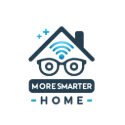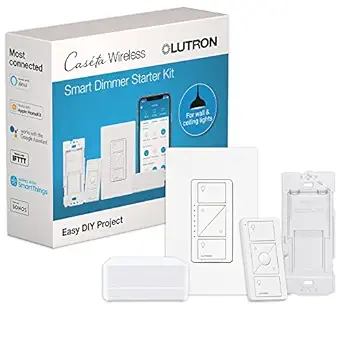Some of the products we mention and recommend may include affiliate links to allow us to offset some of the cost of running this site. For more info please read our privacy policy
DIY Smart Home Automation: Getting Started with Apple HomeKit
Are you ready to take control of your home with smart automation? With the rise of technology, it’s now possible to turn your house into a smart home. And one of the best ways to do that is by using Apple HomeKit compatible devices. In this article, we’ll guide you on how to get started with DIY smart home automation using Apple HomeKit.
What is Apple HomeKit?
If you’re an Apple user, you might have already heard about HomeKit. But for those who are new to this term, HomeKit is a smart home automation platform developed by Apple. It allows users to control and automate compatible smart home devices through the Home app or Siri voice commands.
HomeKit offers a secure and easy way to integrate and control all your smart home devices from one place. And the best part is that you don’t need to be tech-savvy to set it up. With just a few simple steps, you can transform your home into a smart home.
What do you need to get started?
Before you dive into setting up your smart home with Apple HomeKit, there are a few things you need to have.
-
An iOS device: HomeKit is only compatible with iOS devices such as iPhone, iPad, or iPod touch. So, make sure you have at least one of these devices before proceeding.
-
Apple TV, HomePod, or iPad: To control your smart home remotely or through voice commands, you will need an Apple TV (3rd generation or later), HomePod, or iPad (with iOS 10 or later and Home app installed) as a home hub.
-
Wi-Fi or HomeKit-Compatible Hub: Next, you need to make sure that your smart home devices are either Wi-Fi enabled or compatible with a HomeKit hub. This will allow them to communicate with your iOS device and other HomeKit devices.
-
HomeKit-Compatible Devices: Of course, you will need smart home devices that are compatible with HomeKit. These can include lights, thermostats, locks, cameras, and more. Make sure to check the packaging or manufacturer’s website to ensure that the device is HomeKit-compatible.
Setting Up Your HomeKit Devices
Now that you have everything you need, it’s time to set up your HomeKit devices. Here’s a step-by-step guide to getting started:
Step 1: Set up your Home Hub
If you have an Apple TV, HomePod, or iPad set up as a home hub, skip this step. Otherwise, follow these steps to set up your HomePod or iPad as a hub:
-
Make sure your HomePod or iPad is connected to the same Wi-Fi network as your iOS device.
-
On your iOS device, go to Settings > [your name] > Home and turn on the toggle for “Use this iPad/iPhone as a Home Hub.”
-
If you’re setting up a HomePod, make sure it’s connected to power and follow the instructions on your iOS device.
Step 2: Add your Devices to HomeKit
Now, it’s time to add your smart home devices to HomeKit. Here’s how:
-
Make sure your device is set up and ready to be added to HomeKit. Refer to the manufacturer’s instructions if needed.
-
On your iOS device, open the Home app.
-
Tap the “+” button in the top right corner.
-
Choose “Add Accessory.”
-
Scan the device’s HomeKit code or enter it manually.
-
Follow the on-screen instructions to add the device to your HomeKit set up.
-
Repeat the above steps for each of your HomeKit-compatible devices.
Step 3: Organize Your Devices with Rooms and Zones
As you add more devices to HomeKit, it’s essential to organize them into different rooms and zones. This will make it easier to control them and create automations. To do so, follow these steps:
-
In the Home app, tap the “Rooms” tab at the bottom.
-
Tap the “+” button in the top right corner.
-
Choose “Room” or “Zone.”
-
Name the room or zone and select the devices you want to add to it.
-
Repeat the above steps for each room or zone you want to create.
Step 4: Create Scenes and Automations
One of the best features of HomeKit is the ability to create scenes and automations. Scenes are pre-defined settings that allow you to control multiple devices at once. Automations, on the other hand, are rules that trigger actions based on certain conditions.
Here’s how to create a scene and an automation:
-
In the Home app, tap the “Automation” tab at the bottom.
-
Tap the “+” button in the top right corner.
-
Choose either “Create Scene” or “Create Automation.”
-
Follow the on-screen instructions to customize your scene or automation.
-
Repeat the above steps for each scene and automation you want to create.
Conclusion
With just a few simple steps, you can set up a DIY smart home using Apple HomeKit. From controlling your lights and thermostat to locking your doors and viewing security cameras, HomeKit makes it easy to manage all your smart devices from one place.
So, go ahead and take your first step towards a smarter home. And don’t forget to check out more articles on our website for tips and tricks on how to make the most out of your HomeKit setup!


